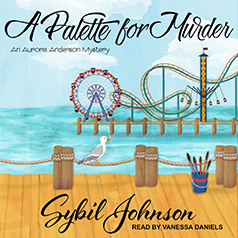Futurists like to give us a rosy view of tomorrow, mostly because they're funded by technologists with something big to sell, never mind the negative consequences. On the flip side, novels about the future tend to be bleak and the setting is often quite dystopian. Three of the landmark works about this grim future are
1984,
Brave New World, and
We. Most of us are familiar with George Orwell's
1984 and its oppressive totalitarian theme. In fact, "Big Brother is watching" is synonymous for government and corporate surveillance. Aldous Huxley's
Brave New World takes a lighter, though ultimately just as constrictive view of a future society managed through biological engineering. Individuals are brought into this world through a decanting process that determines their station in life. What we consider natural birth is regarded as obscene. People are kept docile through officially sanctioned casual sex, group think (social media, anyone?) and the drug soma. "Don't give a damn, take a gram."
Both of these books draw quite a bit from an earlier Russian novel,
We, by Yevgeny Zamyatin, first published in 1920. In this work, people live in glass houses, literally. They are allowed one hour a day "to lower the shades," meaning time for casual sex. Aside from that, there is no notion of privacy. Although Zamyatin intended this story as a critique of Soviet totalitarianism, read today, it's a fantastic satire of how our online lives have taken mastery of our existence. Google, Facebook, Twitter, Amazon--the Internet sees all, it knows all.
Which brings me to another more modern novel,
Altered Carbon, by Richard K. Morgan (Now available on Netflix). It too is a dystopian tale, one that disturbed me when I first read it. The salient premise is that in this future, humans are implanted with an electronic "cordial stack," which downloads your consciousness. As long as the cordial stack remains undamaged, your consciousness can be swapped from body to body, what the book calls "re-sleeving." It's an extraordinary inventive piece of science fiction, and Morgan further delves into the premise by thinking through the consequences of swapping bodies. For example, you can testify at your own murder. In his world, the process is quite expensive--the cost equivalent of a house mortgage--so that "re-sleeving" remains the domain of the government and the wealthy. So the rich have the financial means of switching bodies as casually as the rest of us change clothes and thus the ability to be immortal.
On my second reading of
Altered Carbon, years later, I stumbled over a detail that emphasized just how difficult it is now for science fiction to remain ahead of science fact, even for a work as trail blazing as this one. When the protagonist used a fob to summon a flying taxi, I thought, why doesn't he use the app on his mobile phone? Then I realized, his phone was simply that, a phone. But many of us seldom make calls on our phones; we mostly communicate via text, email, and instant messenger, something that's not done in this story. Also,
Altered Carbon is a mystery so there's a lot of sleuthing about and looking for people. Again, why would that be necessary? We all know we can be tracked by our phones; why couldn't these future people be easily followed by their cordial stacks?
Smart phones represent a technology whose implications we still have a hard time understanding. Besides compromising privacy, they provide a deeply engaging experience that makes their use addictive. One tragic and unintended consequence is how they've facilitated distracted driving so that in the last two years, traffic fatalities have increased because of cell phones.
And I need to mention, that in those very different futures sans cell phones, people are never bothered by telemarketers.















